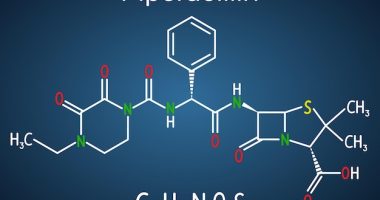Interstitial lung disease (ILD) poses a significant health risk among patients with rheumatoid arthritis (RA), often contributing to heightened morbidity and mortality rates. In addressing this complication, traditional Chinese medicine has re-emerged as an area of scientific interest due to its potential therapeutic benefits. One such remedy, Si Miao Wan (SMW), has long been used to manage RA symptoms including inflammation, excessive moisture, and joint pain. Researchers, led by Yanhua Chen and team, have embarked on a study to delve deep into the mechanisms through which SMW might prevent RA-associated interstitial lung disease (RA-ILD), particularly through the lens of ferroptosis, a specialized form of cell death driven by iron-dependent lipid peroxidation.
Utilizing advanced tools such as Ultra Performance Liquid Chromatography-Quadruple Time of Flight/Mass Spectrometry (UPLC-Q-TOF/MS) and network pharmacology, the team has extracted and examined potential early-stage intervention targets of SMW. The findings, supported further by HE staining, metabolomics, and RT-PCR analyses, suggest that SMW preparation could indeed thwart the onset of RA-ILD when administered at specific dosages. This comprehensive research highlights crucial biomarkers and signaling pathways involved, providing a conceptual groundwork for new SMW-based therapies targeted at RA-ILD. This could mark a significant stride in merging traditional medicinal approaches with modern clinical practices, presenting new avenues for both understanding and combating this complex disease.
The entanglement of rheumatoid arthritis (RA) and interstitial lung disease (ILD) underscores a critical area of concern for clinical researchers and healthcare providers. RA is a chronic autoimmune condition characterized primarily by inflammation of the joints, but it also frequently affects other tissues and organs, including the lungs. ILD in RA patients signifies a prevalent and severe complication, leading to substantial impairment and increased mortality. In fact, lung involvement in RA patients can manifest as one of the most serious extrapulmonary complications, significantly influencing the quality of life and outcomes of afflicted individuals.
The pathogenesis of RA-ILD is multifaceted, involving genetic predispositions, autoimmune inflammation, environmental factors, and possibly the involvement of certain medications used in RA treatment. Once developed, ILD in the context of RA can progress rapidly and is often refractory to conventional RA treatments. Therefore, the search for effective treatments has become a priority. While modern pharmaceuticals such as biologics have made significant strides in controlling RA, their impact on RA-ILD is less pronounced, pointing to a need for specific therapeutic strategies targeting this lung complication.
Traditional Chinese medicine (TCM) provides a unique reservoir of knowledge and resources for novel therapeutic approaches. TCM’s holistic treatment philosophy, focusing on restoring balance within the body’s systems, offers intriguing possibilities for managing complex diseases like RA and its complications. Si Miao Wan (SMW), a classical herbal formula, has been utilized in TCM for centuries primarily to treat symptoms of dampness-heat, involving conditions characterized by inflammation, joint pain, and swelling—all symptoms relevant to RA. The re-exploration of such traditional remedies in the context of RA-ILD represents an innovative direction in interdisciplinary research that bridges traditional insights with contemporary biomedical inquiry.
The leap undertaken by Yanhua Chen and her research team to investigate the potential of SMW in preventing RA-ILD hinges on an understanding of ferroptosis, a recently recognized form of programmed cell death. Ferroptosis is characterized by the accumulation of lipid peroxides and is distinct from other forms of cell death such as apoptosis or necrosis. Its iron dependency and association with oxidative stress make it a compelling target in diseases marked by inflammation and metabolic dysregulation, such as RA-ILD. The hypothesis that SMW could modulate pathways related to ferroptosis offers a novel angle on its potential mechanisms of action.
Chen’s utilization of cutting-edge analytical tools like UPLC-Q-TOF/MS to dissect the components of SMW complements traditional knowledge with scientific validation, providing a robust framework for understanding how these ancient formulas might work at a molecular level. Network pharmacology approaches allow for a systematic exploration of these interactions, potentially uncovering new targets for therapy that are consistent with both the pharmacological profiles of the herbs involved and the complex pathophysiological processes underlying RA-ILD.
This initiative not only illuminates potential new treatment pathways but also contributes to the growing body of work advocating for an integrative approach to healthcare, where traditional medical practices are harmonized with modern clinical research to combat multifaceted diseases more effectively. This study exemplifies how traditional formulations like SMW can be scrutinized through modern scientific lenses, fostering a deeper understanding and wider acceptance of TCM in the global medical community, particularly in managing challenging conditions such as RA-ILD.
The methodology adopted by Yanhua Chen and her team for exploring the preventive potential of Si Miao Wan (SMW) in rheumatoid arthritis-associated interstitial lung disease (RA-ILD) focuses on a multifaceted approach combining high-tech analytical techniques with traditional pharmacological assessments. Here is a detailed examination of the methods used in their study:
### 1. **Herbal Preparation and Chemical Analysis**
To begin with, the SMW was prepared according to traditional Chinese medicine prescriptions using authentically sourced herbs. The concoction was then subjected to chemical analysis using Ultra Performance Liquid Chromatography-Quadruple Time of Flight/Mass Spectrometry (UPLC-Q-TOF/MS). This method enables the identification and quantification of the various bioactive compounds in the herbal mixture, providing a detailed chemical profile of SMW.
### 2. **In Vitro and In Vivo Experiments**
The research was structured to incorporate both in vitro (cell culture) and in vivo (animal model) experiments to evaluate the efficacy of SMW in modulating pathways involved in ferroptosis and RA-ILD progression:
– **In Vitro:** Cultured lung fibroblast cells from patients with RA-ILD were treated with varying concentrations of SMW. These cells were then assessed for markers of ferroptosis, inflammation, and fibrosis through assays measuring lipid peroxidation, iron content, and glutathione levels.
– **In Vivo:** A murine model of RA-ILD was developed by inducing RA in mice followed by a protocol to trigger ILD. Mice were treated with SMW at different stages of disease development to investigate the prophylactic and therapeutic impacts of the herbal formula.
### 3. **Network Pharmacology**
To understand the complex interactions between the components of SMW and the biological pathways in RA-ILD, network pharmacology analyses were undertaken. This approach involved creating a network model that links SMW constituents to known targets and pathways related to ferroptosis and RA-ILD. Database resources such as the Traditional Chinese Medicine Systems Pharmacology Database and Analysis Platform (TCMSP), DrugBank, and the Human Protein Atlas were utilized for target prediction and pathway enrichment analysis.
### 4. **Molecular and Histological Techniques**
Further molecular analyses were conducted using:
– **RT-PCR:** To measure mRNA levels of genes associated with ferroptosis and inflammation in tissue samples from treated and control groups.
– **Metabolomics:** Employing mass spectrometry to analyze metabolic changes in lung tissues, providing insights into the biochemical impact of SMW treatment.
– **HE Staining:** Histological examination of lung tissue was performed using Hematoxylin and Eosin staining to visually assess the extent of tissue damage and fibrotic changes.
### 5. **Data Analysis**
The data collected from the above methodologies were statistically analyzed. The analyses included comparing treatment and control groups to determine the efficacy of SMW, using software like SPSS for statistical tests and R for network graphing and pathway analysis. The significance of changes in gene expression, metabolite levels, and histology scores was determined through appropriate statistical tests.
By combining these diverse yet complementary methods, the research aims to provide a holistic view of how SMW impacts RA-ILD, offering potentially valuable insights into the molecular mechanisms and therapeutic effects of this traditional Chinese medicine against a severe complication of RA. This innovative approach not only paves the way for new therapeutic strategies but also for broader acceptance and integration of TCM in managing complex diseases like RA.
The research led by Yanhua Chen yielded some promising findings regarding the impact of Si Miao Wan (SMW) on rheumatoid arthritis-associated interstitial lung disease (RA-ILD), particularly in relation to the process of ferroptosis. Here are the key results from this innovative study:
### Key Findings:
1. **Reduction in Ferroptosis Markers:**
– SMW treatment led to a noticeable decrease in lipid peroxidation and iron accumulation in both in vitro and in vivo models. These markers are key indicators of ferroptosis, suggesting that SMW can effectively inhibit this process.
– Enhanced levels of glutathione, an antioxidant that plays a critical role in protecting cells from oxidative stress, were also observed, further supporting the anti-ferroptotic action of SMW.
2. **Modulation of Inflammation and Fibrosis:**
– Inflammatory and fibrotic markers, such as TNF-alpha, IL-6, and TGF-beta, showed a substantial reduction in expression in tissue samples treated with SMW, indicating its potential to mitigate inflammation and inhibit fibrotic changes in the lungs of RA-ILD models.
– Histological analyses revealed less tissue damage and reduced fibrotic deposition in lung tissues from the SMW-treated groups compared to controls.
3. **Network Pharmacology Insights:**
– The network pharmacology analysis illuminated the interactions between multiple SMW constituents and biological targets involved in ferroptosis and RA-ILD pathways. Key targets included GPX4, a central regulator of ferroptosis, and signaling molecules related to inflammation and fibrosis.
– This integrative approach helped identify not only the active compounds in SMW but also their potential synergistic effects on critical pathways.
4. **Metabolomic Profile Alterations:**
– Metabolomics analysis further supported the protective effects of SMW, showing significant alterations in metabolic profiles associated with cellular protection against oxidative stress and metabolic reprogramming in the lung tissue of RA-ILD models.
### Results Interpretation:
The combined use of advanced analytical techniques and traditional pharmacological approaches provided robust evidence that SMW could modulate several biochemical pathways crucial in the pathogenesis of RA-ILD. The prevention of ferroptosis by SMW addresses a novel aspect of RA-ILD therapeutics, as it directly impacts the cascade leading to cell death and tissue damage, which are hallmarks of progressive ILD.
These findings suggest that SMW not only has therapeutic potential to mitigate lung involvement in RA through anti-inflammatory and anti-fibrotic effects but also introduces a novel mechanism through inhibition of ferroptosis. This could potentially translate into clinical benefits in managing RA-ILD, a condition notoriously difficult to treat with conventional RA therapies.
### Implications for Future Research and Clinical Practice:
The promising results from Chen’s research open up new avenues for the development of targeted therapies that incorporate TCM principles alongside conventional medical treatments. Further studies are necessary to confirm these findings in larger, diverse human cohorts and to explore the pharmaco-dynamics and safety profiles of SMW in the context of RA-ILD.
The work heralds a pivotal shift towards an integrative medical approach, fostering a deeper understanding of how traditional medicines can be harnessed in modern clinical settings to improve outcomes in complex autoimmune diseases like RA. This research not only builds bridges between different medicinal philosophies but also provides a hopeful outlook for patients suffering from RA-ILD, offering a potential new treatment that could enhance quality of life and disease prognosis.
Looking ahead, Yanhua Chen and her team’s research on Si Miao Wan (SMW) as a potential treatment for rheumatoid arthritis-associated interstitial lung disease (RA-ILD) lays the groundwork for subsequent studies and clinical trials that could substantiate various aspects of their findings. The promising results obtained underscore the necessity of progressive studies tailored to elucidating further the roles of SMW in clinical settings and its adaptability as a standardized treatment option.
### Future Directions in Research:
1. **Clinical Trials:** Future research should focus on conducting rigorous clinical trials to evaluate the efficacy and safety of SMW in patients with RA-ILD. These trials will be crucial in determining optimal dosages, understanding potential side effects, and confirming the therapeutic benefits observed in the preclinical models.
2. **Mechanistic Studies:** Although the study has highlighted the impact of SMW on ferroptosis pathways, more detailed mechanistic studies are needed to fully map out the signaling cascades and interactions at the molecular level. Such studies will enhance the understanding of how SMW components synergistically act to exert their effects.
3. **Long-Term Effects:** Investigating the long-term effects and sustainability of SMW treatment in RA-ILD will be essential to its development as a viable long-term therapy. This includes understanding how SMW interacts with conventional RA medications and its effects on overall disease progression and patient quality of life.
4. **Personalized Medicine Approaches:** Considering the genetic and environmental heterogeneity among RA-ILD patients, future studies could explore the potential for personalized medicine approaches. Evaluating genetic markers or specific biomarkers that predict response to SMW could tailor treatments to individual patient profiles, enhancing efficacy and minimizing adverse effects.
5. **Broader Application:** Expanding the research to include broader applications of SMW in other forms of interstitial lung diseases or autoimmune disorders could uncover additional benefits and therapeutic potentials of this traditional Chinese medicine.
### Final Thoughts:
The investigation led by Yanhua Chen represents a significant advance in the integration of traditional Chinese medicine within modern therapeutic frameworks, specifically for complex diseases like RA-ILD. This research not only reinforces the value of holistic treatment approaches but also underlines the importance of interdisciplinary collaboration in tackling medical challenges. Bridging the gap between traditional remedies and scientific validation, this study paves the way for new paradigms in the treatment of RA and its complications.
Furthermore, the study of SMW in RA-ILD is a testament to the potential global impact of traditional medicines, providing a template for exploring other ancient remedies through a scientific lens. This can lead to a broader acceptance and utilization of such treatments in mainstream medicine, especially in regions where such traditions are an integral part of cultural heritage.
In conclusion, the promising data from this research invite a hopeful perspective for RA-ILD patients and may lead to more effective and comprehensive treatment strategies. By continuing to foster research environments that respect and incorporate traditional knowledge with cutting-edge science, the medical community can look forward to unlocking the full potential of treatments like SMW. The journey from the bench to bedside, while challenging, is filled with the promise of better patient outcomes and a new horizon in autoimmune disease management.









